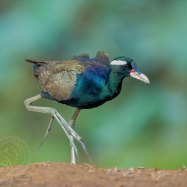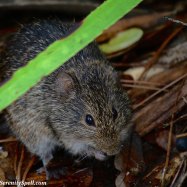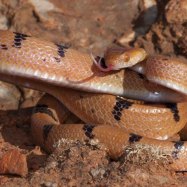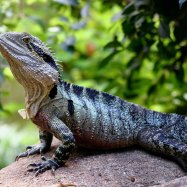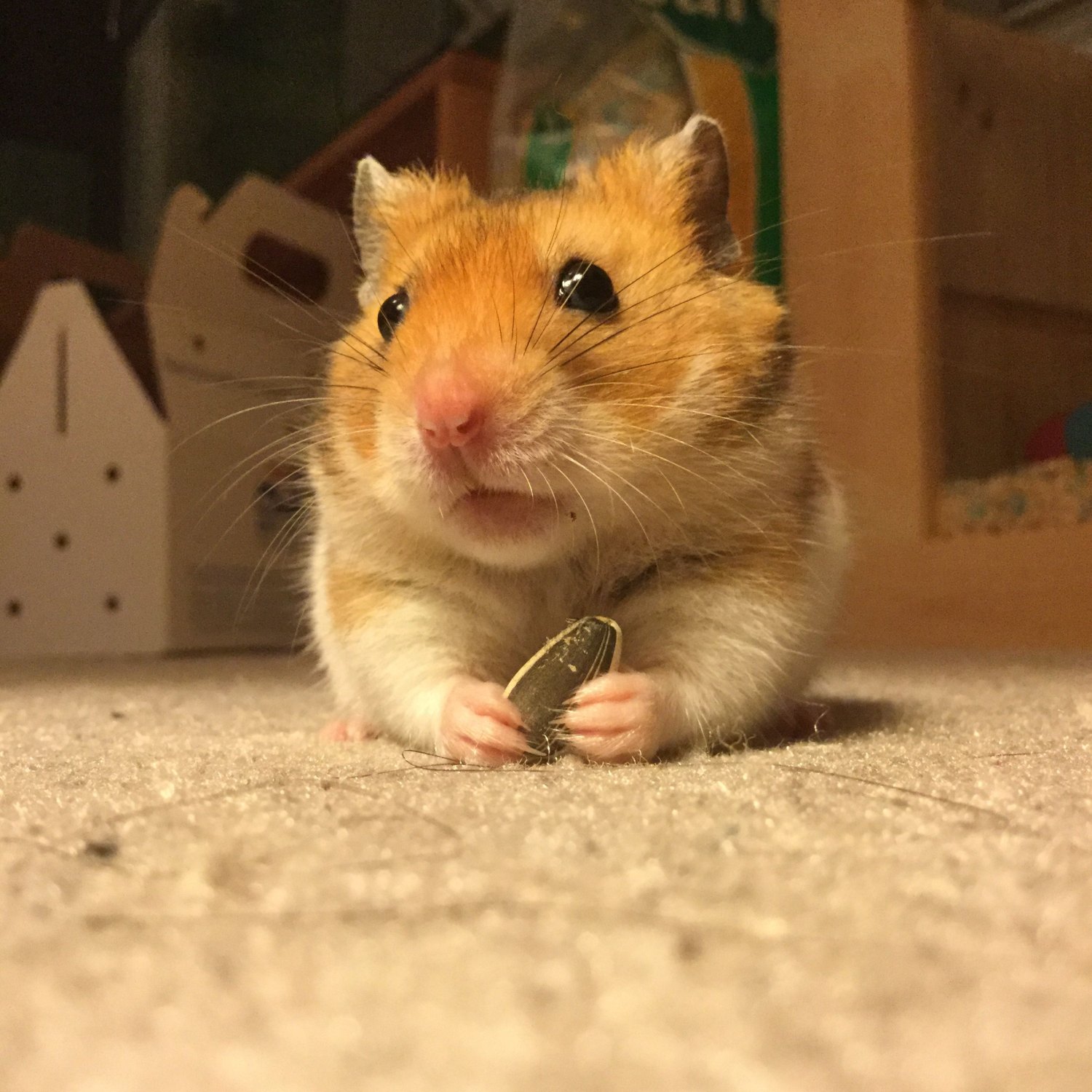
Syrian Hamster
Around 5.5 to 7.5 inches
Meet the adorable Syrian Hamster, known for its small and plump body shape and short legs. These cute creatures can grow up to 7.5 inches and are popular pets found in pet stores and homes worldwide. Belonging to the Cricetidae family, Syrian Hamsters make great companions for families looking for a low maintenance pet. So why not add a furry friend to your household and experience the joy of having a Syrian Hamster as your little companion.
Animal Details Summary:
Common Name: Syrian Hamster
Kingdom: Animalia
Habitat: Desert and grassland regions
The Adorable Syrian Hamster: A Complete Guide
When you think of cute and cuddly pets, what comes to mind? Most likely, a Syrian hamster is on the top of that list. These tiny creatures have captured the hearts of many pet owners with their adorable appearance and lovable personalities. But aside from being a popular pet, do you know anything else about Syrian hamsters? In this comprehensive guide, we'll take a closer look at these furry little creatures and learn everything there is to know about them.The Basics: What is a Syrian Hamster?
The Syrian hamster, also known as the golden hamster, is a small and plump rodent of the Cricetidae family Syrian Hamster. Its scientific name is Mesocricetus auratus, and it is commonly found in desert and grassland regions. These hamsters are omnivorous, meaning they eat both plants and animals, and they are usually found in Syria, Turkey, and Greece, which is also their country of origin.Appearance and Characteristics
Syrian hamsters come in various colors, including golden, brown, grey, and white. These colors are due to selective breeding, as Syrian hamsters in the wild are typically golden-brown. They have short legs and a small, plump body that measures around 5.5 to 7.5 inches in length. However, they can grow up to 9 inches long with their tail included.One of the most distinctive features of a Syrian hamster is their cheek pouches, which can stretch up to the animal's shoulders Scarlet Tanager. These pouches are used to store food and can hold more than the hamster's body weight.
The average lifespan of a Syrian hamster is around 2 to 3 years, but with proper care, they can live up to 4 years. They are nocturnal animals, meaning they are most active at night, and they are solitary creatures, preferring to live alone.
Habitat and Distribution
In the wild, Syrian hamsters can be found in desert and grassland regions. They are mainly active during the night, spending their days burrowing and foraging for food. They are also able to survive in extreme temperatures, making them well-suited to living in dry and arid environments.Aside from their natural habitat, Syrian hamsters are also found in households as pets. They are widely available in pet stores, and many people choose them as their first pet due to their small size and low maintenance requirements.
Feeding and Diet
As mentioned earlier, Syrian hamsters are omnivorous, meaning they eat both plants and animals. In the wild, their diet consists of insects, seeds, and grains. However, as pets, they are usually fed a diet of commercially available hamster mix, which has a balanced blend of grains, seeds, and nuts.Additionally, Syrian hamsters also require fresh fruits and vegetables in their diet. Some examples of safe fruits and vegetables for them are apples, carrots, broccoli, and leafy greens. It is important to avoid giving them sugary fruits like grapes and bananas, as well as acidic ones like oranges and lemons.
Caring for a Syrian Hamster
As with any other pet, proper care and attention are essential in keeping Syrian hamsters happy and healthy. Here are some essential tips for taking care of your furry little friend:1. Housing
The ideal housing for a Syrian hamster is a wire cage with a solid bottom. Unlike other hamsters, they are not great climbers, so a cage with high walls is not necessary. However, make sure the spacing between the wires is not too wide, as they can escape through small openings. The cage should also have adequate ventilation and space for your hamster to move around.
2. Bedding
Hamsters love to burrow, so providing them with a deep layer of bedding is important for their mental and physical well-being. The best bedding for Syrian hamsters is wood shavings, as they are safe and easy to find. However, avoid using cedar and pine shavings, as these can cause respiratory problems.
3. Exercise
Syrian hamsters are active creatures and need plenty of exercise to stay healthy. Providing them with a wheel or a hamster ball is a great way for them to burn off their excess energy. Just make sure the wheel or ball is large enough for them to run in without getting cramped.
4. Bonding and Handling
Syrian hamsters are known for their friendly and affectionate nature, and they can form strong bonds with their owners. The key to bonding with your hamster is patience and consistency. Offer them treats and spend time with them regularly to gain their trust. Once they are comfortable with you, you can gently hold and handle them to form a stronger bond.
Fun Facts about Syrian Hamsters
- Syrian hamsters are great escape artists and can squeeze through tiny openings with their flexible bodies.- They have a strong sense of smell, and they use scent marking to navigate their territory.
- Unlike other hamsters, Syrian hamsters do not hibernate, even in colder temperatures.
- These hamsters can run up to 5 miles on a single night, equivalent to a human running a marathon.
- A newborn Syrian hamster can fit on a teaspoon and grow to be the size of a small adult apple.
In Conclusion
Syrian hamsters are incredible creatures with unique characteristics and personalities. From their desert origins to their cuddly appearance, they are true marvels of the animal kingdom. With proper care and attention, they can make excellent pets for anyone looking for a loving and low-maintenance companion. So if you're thinking of adding a Syrian hamster to your family, be prepared for endless amounts of cuteness and love!

Syrian Hamster
Animal Details Syrian Hamster - Scientific Name: Mesocricetus auratus
- Category: Animals S
- Scientific Name: Mesocricetus auratus
- Common Name: Syrian Hamster
- Kingdom: Animalia
- Phylum: Chordata
- Class: Mammalia
- Order: Rodentia
- Family: Cricetidae
- Habitat: Desert and grassland regions
- Feeding Method: Omnivorous
- Geographical Distribution: Syria, Turkey, Greece
- Country of Origin: Syria
- Location: Pet stores, homes as pets
- Animal Coloration: Various colors including golden, brown, grey, and white
- Body Shape: Small and plump with short legs
- Length: Around 5.5 to 7.5 inches
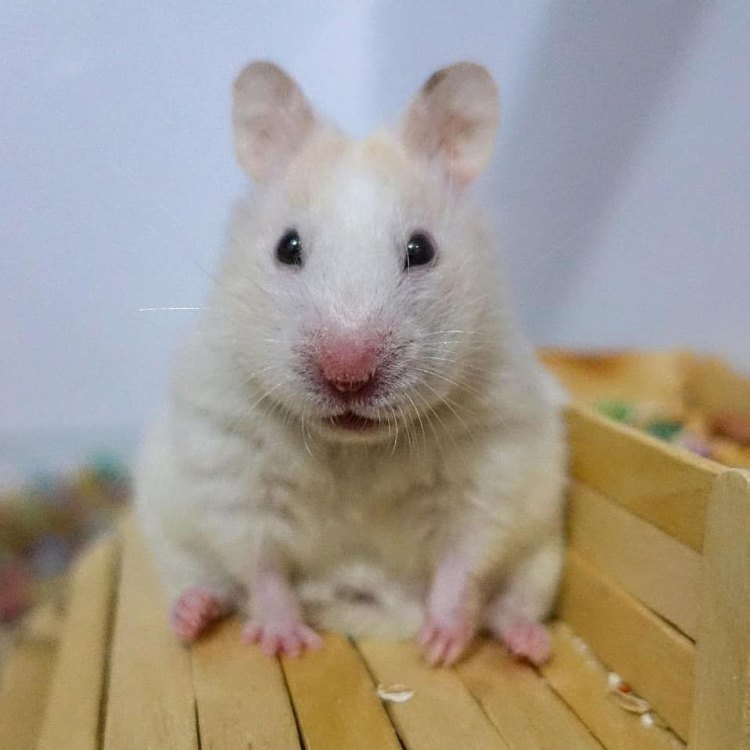
Syrian Hamster
- Adult Size: Around 6 to 7 inches
- Average Lifespan: 2 to 3 years
- Reproduction: Sexual
- Reproductive Behavior: Mating occurs at night and gestation lasts approximately 16 days
- Sound or Call: Squeaking, chirping, and occasionally growling
- Migration Pattern: Non-migratory
- Social Groups: Solitary
- Behavior: Nocturnal, burrowers, hoarders
- Threats: Predation
- Conservation Status: Least Concern
- Impact on Ecosystem: Seed dispersers
- Human Use: Pets, laboratory animals
- Distinctive Features: Cheek pouches for storing food, small tail
- Interesting Facts: They can run up to 5 miles per night on their wheel
- Predator: Birds of prey, snakes, and larger mammals
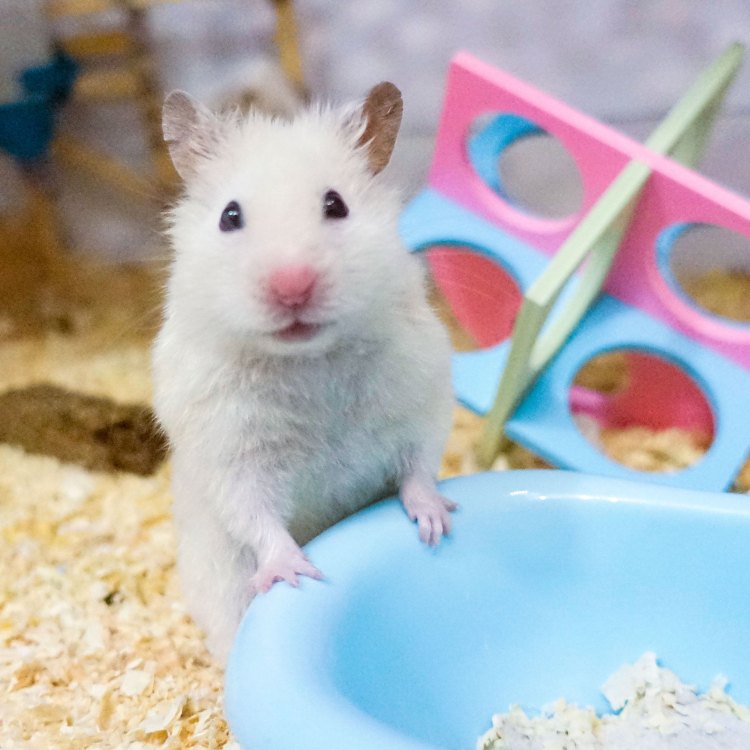
Mesocricetus auratus
The Fascinating World of Syrian Hamsters
Syrian hamsters, also known as golden hamsters, are one of the most popular small pets around the world. These adorable creatures have captured the hearts of many through their cute appearance and playful personalities. But there is more to Syrian hamsters than just being cute and cuddly. In fact, they have many unique features and behaviors that make them stand out among other hamster species PeaceOfAnimals.Com. In this article, we will dive into the fascinating world of Syrian hamsters and get to know more about these lovable furry friends.The Basics of Syrian Hamsters
First things first, what makes Syrian hamsters different from other hamster species? Well, these furry creatures are the largest of all hamster breeds, with an average adult size of 6 to 7 inches. They have a chunky body, short legs, and a small tail that measures only about a quarter of an inch. Their coat color can range from golden brown to dark brown with a white belly. They also have distinctive cheek pouches which they use for storing food, and this allows them to carry food up to half of their body weight.Reproduction and Behavior
Like most mammals, Syrian hamsters are sexual beings. Mating usually occurs at night, and the gestation period lasts approximately 16 days. Male hamsters are known for their territorial behavior, and they can display aggression towards other male hamsters. On the other hand, female hamsters are more tolerant and can live together in pairs or small groups Starfish.Syrian hamsters are also known for their nocturnal behavior. They are most active during the night and will spend most of their day sleeping. Their natural instinct is to burrow and create tunnels, which helps them stay cool during hot weather. As hoarders, Syrian hamsters will store food in their burrows or in their cheek pouches. This behavior is essential for their survival, as it allows them to have a constant food supply during times of scarcity.
The Social Life of Syrian Hamsters
Unlike many other hamster species, Syrian hamsters are solitary animals and prefer to live alone. This is because they are highly territorial and do not do well in groups or pairs. They may display aggressive behavior towards other hamsters, especially when they feel their territory is being invaded. Thus, it is recommended to house Syrian hamsters separately and only introduce them for breeding purposes.Threats and Conservation Status
In the wild, Syrian hamsters face many threats, mainly from predators such as birds of prey, snakes, and larger mammals. They have also been affected by habitat loss due to urbanization and agricultural practices. However, in the wild, Syrian hamsters are classified as least concern by the International Union for Conservation of Nature (IUCN). This means that their population is stable, and there are no major conservation concerns.Syrian Hamsters and the Ecosystem
Though they may be small, Syrian hamsters play an essential role in their ecosystem. Being seed dispersers, they help in the germination of plants and the growth of new vegetation. They also serve as a food source for their predators, helping maintain a balance in the food chain.Human Use and Interaction
Syrian hamsters have been domesticated for centuries and are commonly kept as pets. They are known for their curious and friendly nature, making them perfect companions for both adults and children. These little creatures are easy to care for, and their lifespan of 2 to 3 years makes them an ideal pet for those looking for a short-term commitment.In addition to being pets, Syrian hamsters are also used as laboratory animals for scientific research. Due to their docile nature, they are often used in studies on genetics, behavior, and the effects of certain substances. However, animal welfare organizations have been working towards promoting the ethical use of animals in scientific studies and ensuring the well-being of these lab animals.
Interesting Facts about Syrian Hamsters
Aside from their unique features and behaviors, Syrian hamsters have many interesting facts that make them even more fascinating. Did you know that they have excellent eyesight and can recognize familiar faces and voices? They are also incredibly fast runners and can run up to 5 miles per night on their exercise wheel. Their teeth never stop growing, and they need to constantly chew on hard objects to keep them at a manageable length. Additionally, Syrian hamsters have a very strong sense of smell, and they use it to find food and locate their burrows.In terms of communication, Syrian hamsters are not very vocal, but they do make different sounds, including squeaking, chirping, and occasionally growling. These sounds are usually a way of expressing their feelings, such as excitement or distress, or to communicate with other hamsters.
The Ultimate Prey: Syrian Hamsters and Predators
As mentioned earlier, Syrian hamsters face threats from various predators in the wild. Despite their small size, they have evolved to have excellent survival skills. They have a strong sense of hearing, which helps them detect potential predators and quickly escape to their burrows. They are also known for their swift movements and can run at high speeds, making it difficult for predators to catch them.In captivity, hamsters are protected from predators, but it is essential to create a safe and secure environment for them. This includes providing a proper cage with a secure lid and making sure they have enough hiding places to feel safe.
In Conclusion
Syrian hamsters may be small, but they are mighty in many ways. Their unique features and behaviors make them a fascinating species to study and keep as pets. From their solitary nature to their excellent survival skills, these furry creatures have adapted to thrive in the wild and in captivity. As their popularity continues to grow, it is important to ensure their well-being and the ethical treatment of these adorable creatures. Whether as pets or in the wild, Syrian hamsters have captured the hearts of many, and it's no surprise why.
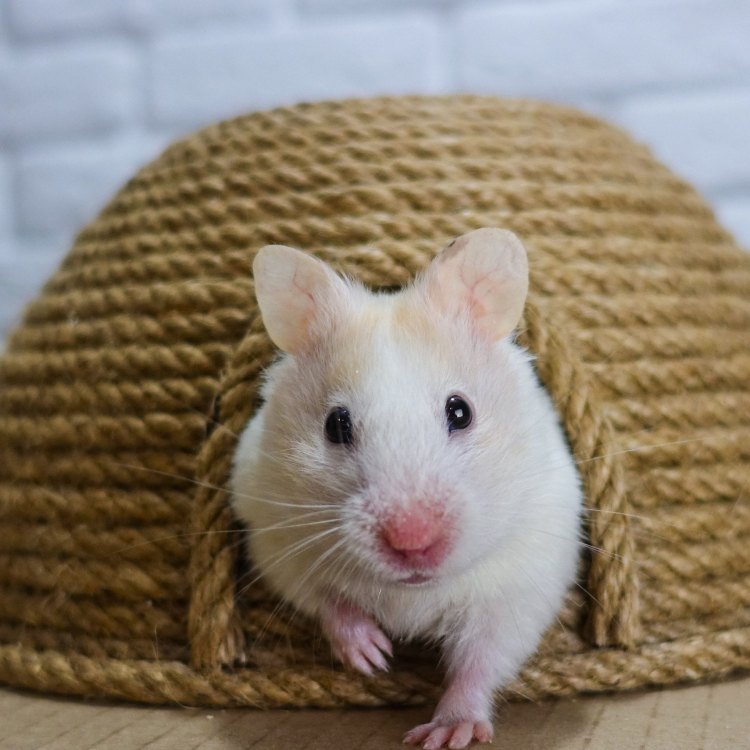
The Adorable Syrian Hamster: A Complete Guide
Disclaimer: The content provided is for informational purposes only. We cannot guarantee the accuracy of the information on this page 100%. All information provided here may change without prior notice.




